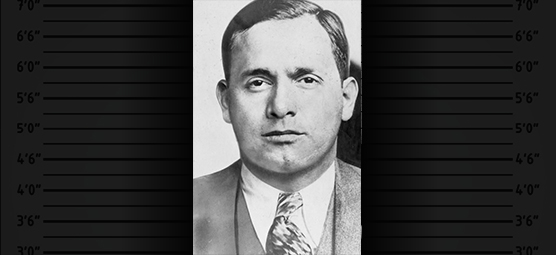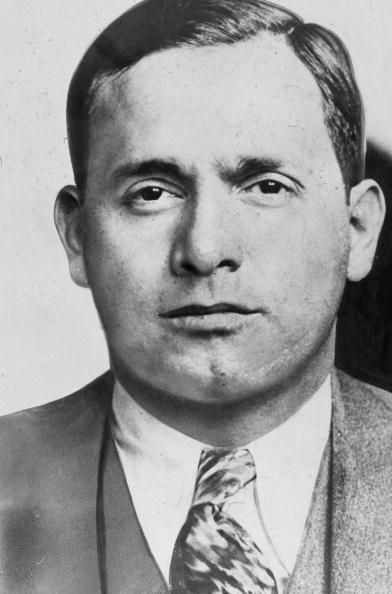Don’t dare call him ‘Three Finger Brown’
Fifty years ago, New York Mafia boss Tommy Lucchese died

The 1960s marked the end of an era for some of America’s underworld leaders. The forward-thinking, Prohibition-era architects of New York’s “Five Families” were aging, imprisoned, retired or already long since interred. In 1967 – 50 years ago – New York lost another original gangster. The public got to know him as “Three Finger Brown,” but you’d never say it to his face. Gaetano “Tommy” Lucchese died on July 13, 1967, of a brain tumor.

Compared with those of his colleagues, Lucchese’s Mafia family wasn’t the biggest, nor was his reign the longest (14 years as actual boss, 22 years as underboss to the family’s original boss – Tommaso “Tommy” Gagliano). Still, he cemented a prominent spot in the annals of gangland history.
Born in Sicily in 1899, Lucchese immigrated to the United States with his family in 1911. In 1919, while employed at a munitions manufacturer, Lucchese lost his right forefinger. It was an accident that earned him a nickname, Three Finger Brown, that nobody dared use – except for the cop who labeled him and the press that kept the moniker alive for years.
Lucchese’s life in crime began in East Harlem with the 107th Street Gang. He kept his head and reputation low, but racked up a series of arrests in the 1920s that included theft and murder charges. His only conviction, however, stemmed from a 1921 auto theft.
Lucchese played a prominent role, along with many of America’s most infamous Mafia figures, during and after the so-called Castellammarese War, a bloody battle for power in 1930-1931, and helped reshape the underworld landscape. Among his closest allies of the early ’30s was a veritable who’s who of Mob legends: Charles “Lucky” Luciano, Frank Costello and Meyer Lansky.
With the death of Gagliano in 1951 (exactly when he died is still a subject of debate), Lucchese rose from underboss to boss and the Mafia family adopted the Lucchese name. The new chief used brains as much as, if not more than brawn to establish himself as one of the elite figures in America’s Mafia history. Lucchese had remained, for the most part, considerably more elusive than many of his contemporaries. That is, until right around the time he took over leadership. The once-mysterious boss would begin seeing his name regularly printed in newspapers by 1952, a direct byproduct of enhanced law enforcement scrutiny and public interest in underworld intrigue.
Federal authorities had been investigating Lucchese since 1943, when his naturalization application was finally approved. In September 1952, after a 10-day official search, lawmen finally pinned down Tommy in Lido Beach on Long Island and through his attorney, acting as an intermediary, Lucchese yielded. He was called in to appear before a committee, which aggressively tried to draw information from Lucchese. Although the inquiry was carried out in private, some of the hearing’s results were divulged to the media. Despite Lucchese’s generally cryptic or entirely tight-lipped demeanor during questioning, the committee apparently gleaned slivers of useful information, including political ties, sports betting corruption (including strong ties to the Mob’s boxing czar Frankie Carbo) and narcotics trafficking. All of this, plus Lucchese’s own false statements on his naturalization application, fueled the U.S. attorney general’s campaign to have him deported.
Lucchese’s role was being seen as that of overall leader. The government felt he basically took up where the Mafia’s longtime political alliance-maker, Frank Costello, left off. Costello, a gangster renowned for allies in the legitimate world, was thought to have lost a number of political supporters after his appearance before the Kefauver Committee. “Nationally,” Kefauver Committee counsel Rudolph Halley said, “I’d say that Lucchese is the big boss.”

Publicly, Lucchese insisted he was above board: “I make $100,000 a year with my dress factories. I got 1,500 people working for me. I give them all the fringe benefits, plus turkeys twice a year. If a girl has a baby, I give her a carriage or $50. If it’s twins, the parents get a car. Triplets, I build them a house. But nobody’s had twins or triplets yet.”
But the reality of Lucchese’s criminal life was an alarming revelation for a number of prominent, legitimate friends and associates who – before the government inquiries – had little idea of the true background of the man they thought (or claimed to think) was an upstanding businessman. Lucchese’s façade had largely been that of a low-key, successful garment district entrepreneur (a racket he and Murder Inc.’s Louis “Lepke” Buchalter dominated dating back to the 1930s). It has been said that Lucchese probably could have transitioned into and done well in the legitimate business world.
Despite having a relatively demure official rap sheet in terms of volume, the two homicide charges – which he deliberately left out of his naturalization application – demonstrated Lucchese did not veer from violent resolve. However, to the dismay of the U.S. Justice Department, in April of 1958, the Supreme Court dismissed the denaturalization charges against Lucchese, Frank Costello and three others.
The government wasn’t quite done with its interest in organized crime and figures such as the so-called dress maker. On July 3, 1958, Lucchese said little before the New York Crime Commission, but did offer a few responses that Bobby Kennedy characterized as “a lot more information” than any other of the defiant mobster witnesses had revealed, and described the exchange as “almost a pleasure.” Nevertheless, Lucchese maintained he had no affiliation with the Mafia.
Speaking to Nassau District Attorney William Cahn in 1963, Lucchese asserted, “I know nothing about any Cosa Nostra. Never heard of it. The only thing I belong to is the Knights of Columbus.”
Lucchese’s name again made headlines when government informant Joe Valachi divulged the inner workings of America’s Mafia structure in 1963. Lucchese, also called before the McClellan Senate Committee hearings, again invoked his right to avoid self-incrimination, but his silence offered little counterpunch against the shocking Valachi testimony.
The committee had branded Lucchese a top criminal, if not the single most important of Mafia bosses at the time. Despite all the efforts of committees and law enforcement investigations, the government’s attempt to deport Lucchese proved futile. His physical health, however, became a battle he could not win. Multiple ailments, including heart problems, proved too much for the 67-year-old Mafia boss and he died from a brain tumor at his Lido Beach, New York, home.
Christian Cipollini is an organized crime historian, and the award-winning author and creator of the comic book series LUCKY, based on the true story of Lucky Luciano. Go to www.ganglandlegends.com.
Feedback or questions? Email blog@themobmuseum.org





